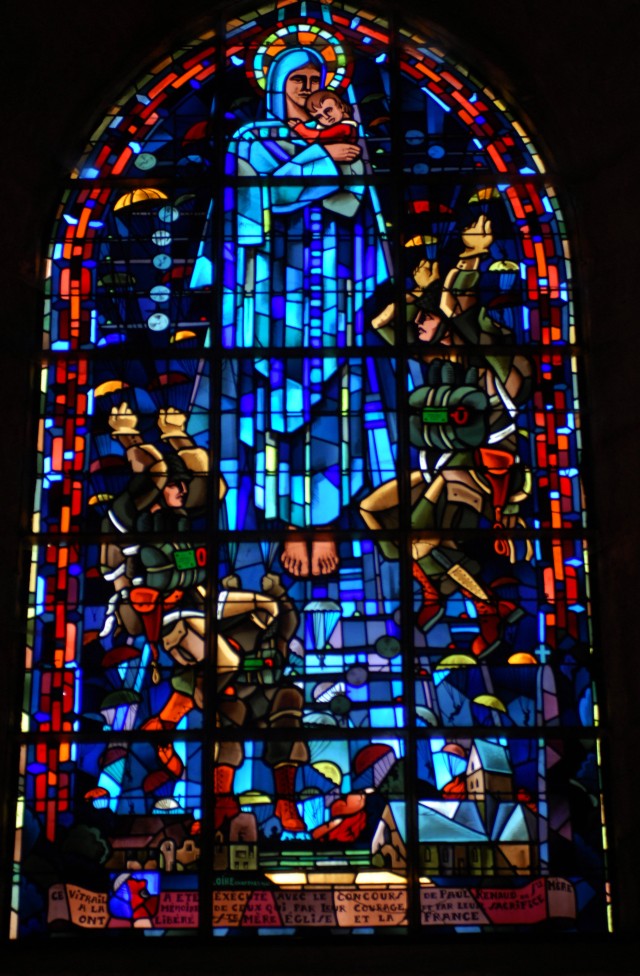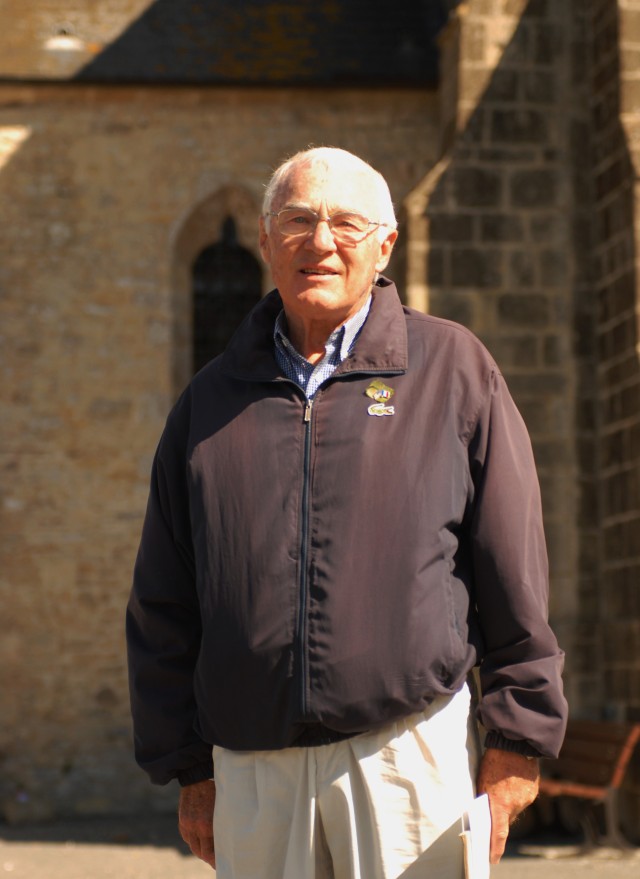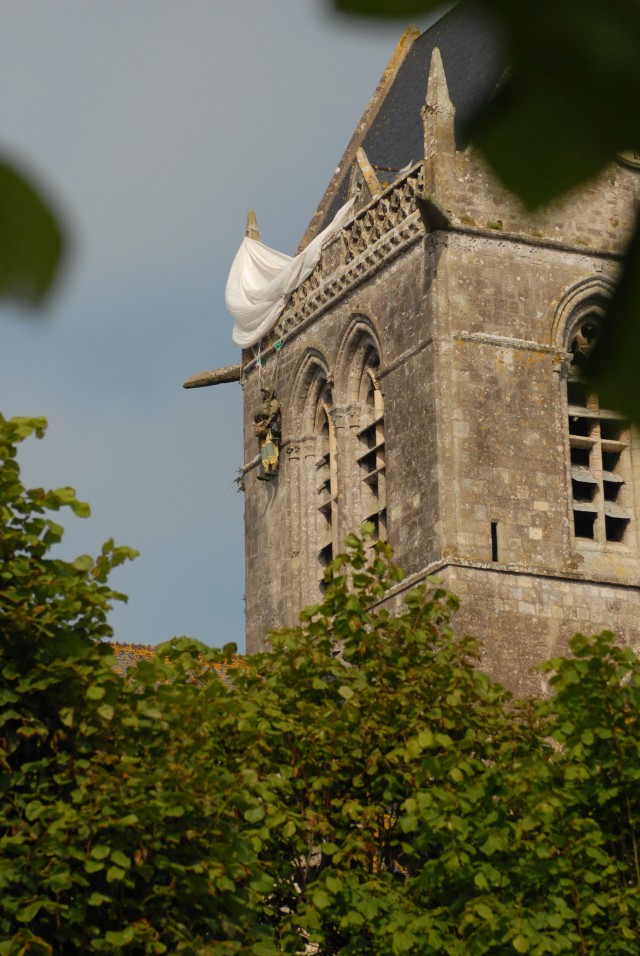SAINTE MERE EGLISE, France -- It was the middle of the night and the town of Sainte Mere Eglise was on fire. Occupied by the Germans since June 18, 1940, the town had survived several allied air raids.
A stray incendiary bomb from one of those raids had set a building near the town square on fire and it was spreading. The townspeople formed a chain to ferry water from the pump in the town square to the fire.
At about 1:30 a.m. that day -- June 6, 1944 -- the sky filled with hundreds of American paratroopers from the 82nd Airborne Division. Well lit by the flames beneath them, the paratroopers were easy targets for the startled German soldiers on the ground. One of those paratroopers was Pvt. John Steele of F Company, 3rd Battalion, 505th Parachute Infantry Regiment. Steele was already a combat veteran, with combat jumps into Italy and Sicily under his belt prior to D-Day.
During his landing, Steele's parachute became caught in the steeple of the church in the middle of the town square. Shot through the foot, Steele hung there for two hours pretending to be dead before the Germans noticed him and cut him down.
"There were some paratroopers who landed nearby, but they didn't help him because they thought he was dead. The Germans thought he was dead also, but they wanted whatever papers he had on him and that is when they discovered that he was alive," said Patrick Bunel, a curator at the Airborne Museum here.
The German soldiers took him prisoner, but Steele was able to escape once tanks that had landed at Utah beach arrived. At approximately 4:30 a.m. Sainte Mere Eglise became the first town in France to be liberated. The fighting around the town continued until June 7, when the Germans were finally pushed back. Steele was awarded the Bronze Star for valor and the Purple Heart for his actions during the invasion.
Today a uniformed mannequin hangs from a parachute and rigging on the steeple, in honor of Steele (who actually landed in back of the church), his fateful jump and the liberation of the town below.
"When I first saw it (the mannequin), I didn't know that it had actually happened," said Pfc. Cory Peppeard of the 230th Military Police Company, 18th Military Police Brigade, one of hundreds of U.S. servicemembers here to support this week's 65th anniversary commemoration of D-Day. "It's pretty impressive that he was able to survive that."
Sainte Mere Eglise secured Steele a place in history as a Soldier in the division that helped to liberate the town, but also as the paratrooper who landed on the church. It was a scene that would be recreated 18 years later in the 1962 movie, "The Longest Day," in which Steele was portrayed by the actor Red Buttons.
Steele regularly visited here before his death in 1969 from cancer. But he was not the only American the town remembers.
Their actions here have also been captured in two stained glass windows in the church. One was designed in 1945 by a local artist named Paul Renaud, who was 14 years old when the paratroopers landed and 16 years old when he drew the sketch for a window made by Gabriel Loire in the village of Chartres.
It depicts the Virgin Mary and child above a burning Sainte Mere Eglise with paratroopers and planes around her. An inscription below the figures reads: "This stained glass was completed with the participation of Paul Renaud and Sainte Mere, for the memory of those who, with their courage and sacrifice, liberated Sainte Mere Eglise and France".
"My father worked with the parish to come up with an idea to replace the original window, which had been destroyed," said Henri Jean Renaud, whose father was the mayor of Saint Mere Eglise at the time. Renaud was 10 years old when the paratroopers landed.
A second window depicts Saint Michael, the patron saint of paratroopers. The 82nd Airborne Division, the lion of Normandy, the Sainte Mere Eglise insignia, and symbols for each of the combat jumps made by the 82nd Airborne Division during World War II are also represented in the window.
The idea for the window began at the 25th anniversary of the jump and was donated by the veterans of the 505th Parachute Infantry Regiment, 82nd Airborne Division, in 1972. The same artist that made the first window also made the second. The inscription at the bottom reads: "To the memory of those who through their sacrifice liberated Sainte Mere Eglise."
While the mannequin and windows are but inanimate objects, Renaud said, they help keep the memory of very real heroes alive.
"We are really very devoted to the veterans," said Renaud. "For me, when they landed, they were like heroes in a movie. Now they are brothers."






Social Sharing